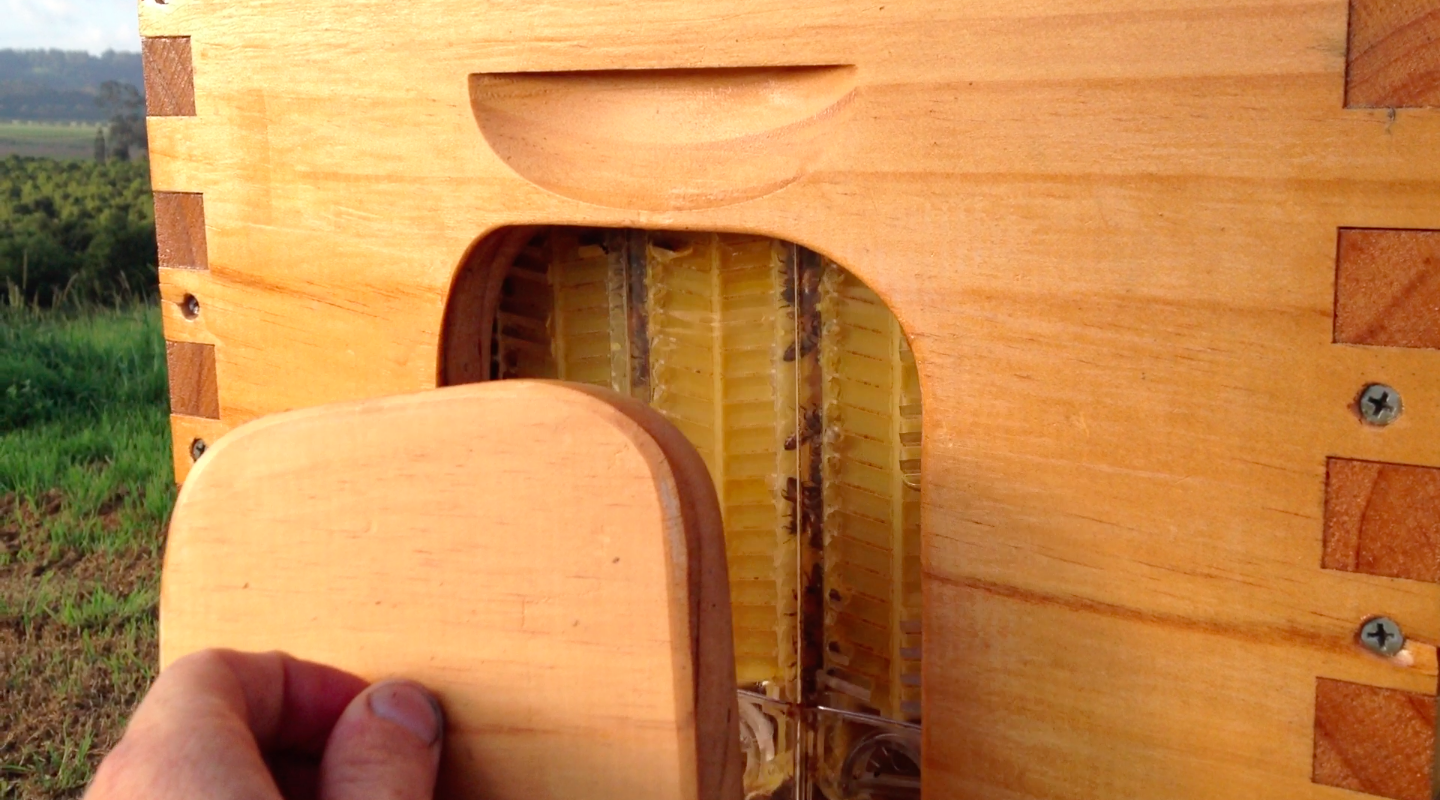Beehive with flowing honey collected $ 2 million
The crowdfunding campaign has just begun, but funding has already been met by 3000%
 On February 14, a video appeared in the network with a demonstration of the hive project, to extract honey from which it is enough to substitute the container and wait until it is filled. The video was very popular and scored a million views in two days. Actually , the crowdfunding campaign , in which the video called for participation, began on February 22, and its success was no less staggering: the project became the Indiegogo record holder in the speed of recruiting the first and second millions.
On February 14, a video appeared in the network with a demonstration of the hive project, to extract honey from which it is enough to substitute the container and wait until it is filled. The video was very popular and scored a million views in two days. Actually , the crowdfunding campaign , in which the video called for participation, began on February 22, and its success was no less staggering: the project became the Indiegogo record holder in the speed of recruiting the first and second millions.And this is not surprising: extracting honey from hives is the most time consuming and laborious work in beekeeping. Traditionally, this operation consists of many steps, the main ones are the opening of the hive, the removal of the bees, the printing of the honeycomb and the centrifuge of the honey extractor apparatus. It is also possible for honey to drain without any help and after that thermal effects. And the Australian project Flow offers a solution in which you do not need to open the hive and disturb the bees to extract honey - you only need a container into which the finished product will flow.

The designed hive has three Flow frames between four regular frames.
The idea was born on the north coast of New South Wales as a result of many bites through protective equipment and annoyance from dozens of crushed bees. Father and son Kedar and Stuart Anderson have been developing this project for a decade. The result was a plastic (without bisphenol A) Flow frame, which consists of partially formed honeycombs.
')
Bees finish honeycombs with wax, lay the product and seal it. Flow frame opens in the middle. Honey flows down from two rows of honeycombs down without the need to disturb the bee family with smoke. Then they close again so that the bees can print out the empty cells and continue collecting the product - the bees almost immediately notice that the honeycombs are empty. Bees reuse a portion of the wax, which can improve the performance and delivery of honey. The plexiglass window allows you to see when the honey is sealed and ready for harvest.

Honey flows from the framework of Flow
The authors call their invention the most significant innovation in beekeeping since 1852, hinting that Flow stands on a par with the Langstroth hive. It is easy to see that the novelty not only saves time and makes the process painless for the bees, but also puts honey in the framework of a simple process available to those who are not ready to buy expensive equipment. Bees often become aggressive when disassembling their hive. It is promised that with Flow neighbors beekeeper will not notice the process of collecting honey.
There are several options available for backers: you can either get a ready-made Flow Box, or several Flow frames for incorporating them into your own standard hive design. Prices start from $ 230, they can be found on the project page . For $ 600, a backer will receive a set to collect a fully prepared hive, for which you only need to find a bee.
Australians claim on the basis of several years of observation that bees do not have any particular preferences and fill Flow cells with the same frequency as cells of the usual framework. It is also stated that each frame brings up to 3 kg of honey, and the frequency of possible collection varies depending on the strength of the family and can range from a week in peak season to a month. Honey takes from twenty minutes to two hours to drain. It is also recommended to wear protective clothing. Of course, do not forget to leave part of the honey for wintering bees.
Crowdfunding campaign . 40 days are left until its end, but it is already clear that the final amount of financing will be much more than the requested 70 thousand dollars.
Patent of invention (without pictures)
Project website
Source: https://habr.com/ru/post/365151/
All Articles